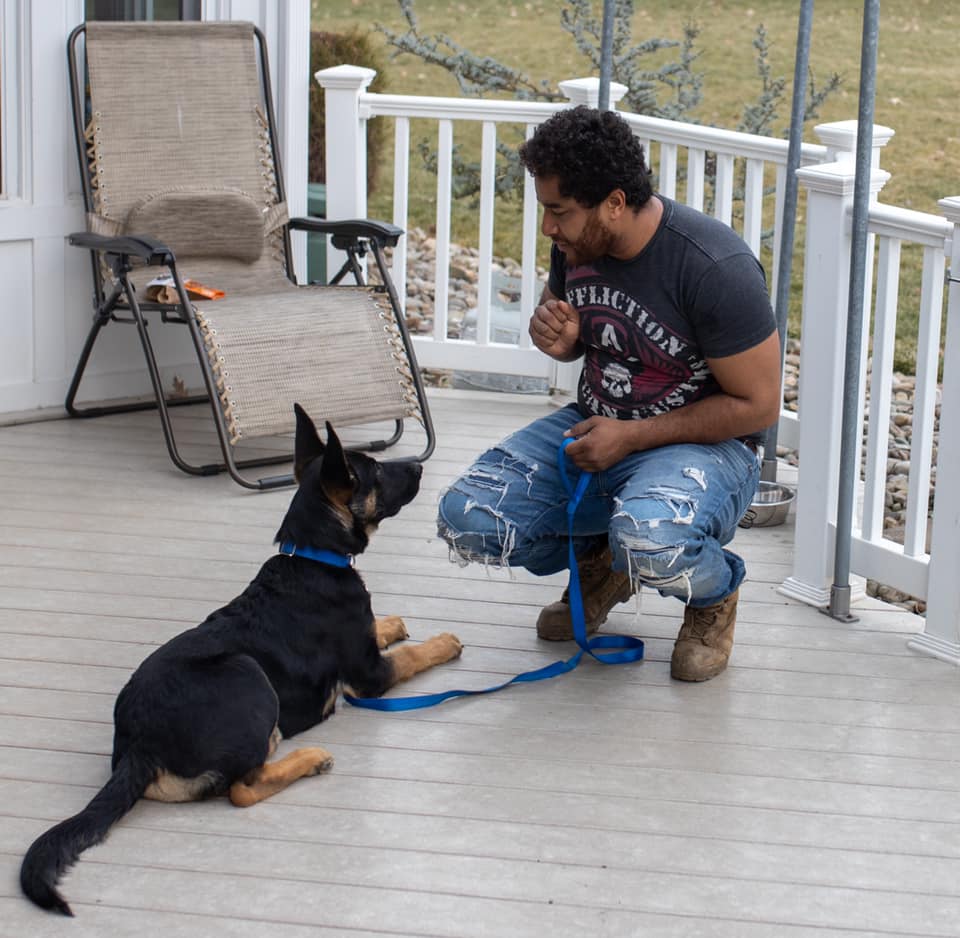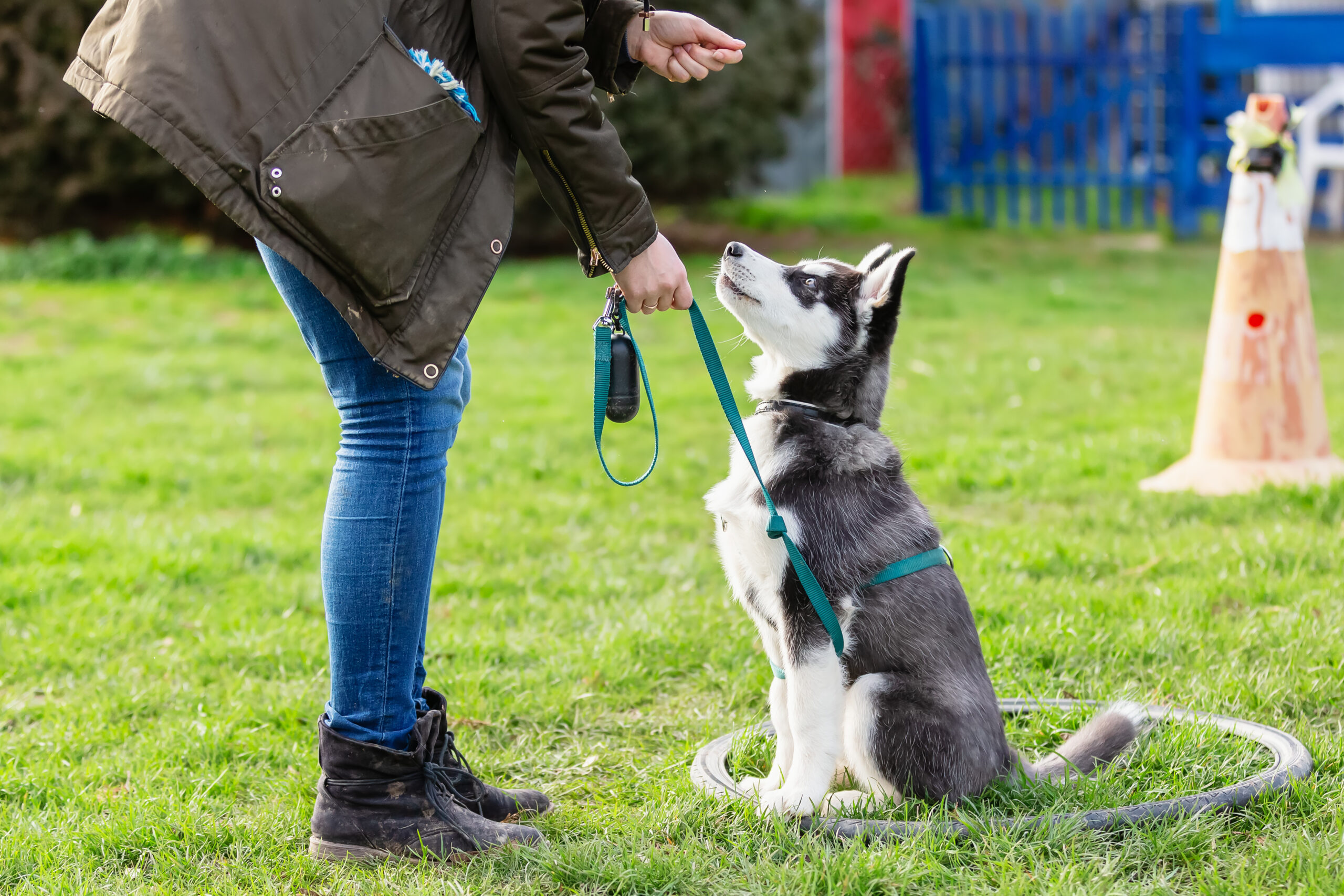Efficient Strategies for Effective Pet Training: A Comprehensive Overview
Efficient dog training needs a nuanced understanding of canine habits. It pivots on the concepts of positive support and uniformity. Fitness instructors need to recognize the significance of crucial commands and socialization. Attending to usual behavior issues can change a dog's personality. As the bond between owner and pet strengthens, the method they interact evolves. The trip of effective training encompasses numerous strategies that might surprise also experienced family pet proprietors. What are the crucial elements that can make a substantial difference?
Comprehending Canine Behavior
Understanding canine behavior is essential for effective pet dog training, as it permits instructors to analyze a pet dog's actions and responses in different circumstances. Dogs connect largely via body language, articulations, and faces. Acknowledging indicators of aggressiveness, fear, or stress and anxiety can help instructors change their strategies to assure a positive training experience. A wagging tail does not always show happiness; the context and various other body cues must be taken into consideration.
Additionally, understanding a pet's breed-specific attributes can offer understandings into their behavior patterns and impulses. Socialization plays a vital function fit a pet dog's feedbacks to brand-new individuals and atmospheres. Observing a canine's play design can also disclose their character and convenience levels. By carefully evaluating these behaviors, instructors can develop customized techniques that foster understanding and strengthen the bond between canine and proprietor, inevitably resulting in more effective training outcomes.
The Significance of Favorable Reinforcement
Favorable support is a key strategy in dog training that enhances the finding out procedure by fulfilling desired habits. This method motivates pets to duplicate activities that generate positive results, such as deals with, appreciation, or play (Dog Training Near Me). By connecting great behavior with incentives, canines become extra inspired and involved throughout training sessions

Incorporating positive support right into training routines can lead to quicker discovering and much better retention of commands. It advertises a cheerful environment that enhances both the canine's experience and the fitness instructor's satisfaction, making it a basic facet of effective pet training.
Vital Commands Every Pet Dog Must Know

Producing a Constant Training Set Up
Establishing a regular training schedule is important for effective dog training, as it aids enhance learning and creates a feeling of routine for the dog. An organized technique enables both the trainer and the dog to anticipate training sessions, which can enhance emphasis and interaction. Ideally, training sessions ought to be short, enduring in between 5 to 15 mins, to keep the pet dog's interest and enthusiasm.
Incorporating training into daily activities, such as mealtime or strolls, can also advertise uniformity. This assimilation assists pet dogs connect training with positive experiences. It is essential for trainers to remain versatile; unforeseen occasions might necessitate changes to the schedule.
In addition, repetition is crucial. Regular method of habits and commands strengthens knowing and constructs confidence. By adhering to a constant routine, trainers can ensure that their pet dogs create good routines and react reliably to commands, laying the groundwork for efficient training end results.
Socialization: Secret to a Well-Adjusted Pet dog
Socializing is important for a pet's development, influencing their habits and communications with people and other pets. Very early exposure to numerous environments, seems, and experiences can greatly improve a pet's flexibility and confidence. Utilizing efficient socialization methods can aid ensure a well-adjusted canine companion.
Value of Early Socialization

Strategies for Reliable Socializing
While many dog owners recognize the significance of socialization, comprehending efficient methods to facilitate this process is crucial for fostering a well-adjusted pet dog. Progressive direct exposure to varied atmospheres, people, and other animals can greatly enhance a pet's convenience level in various circumstances. Positive support plays an essential duty; gratifying wanted behaviors encourages canines to come close to new experiences with confidence. Structured playdates with well-mannered pets aid establish social skills and reduce anxiety responses. Enrolling in obedience classes can likewise supply regulated atmospheres for socializing. Lastly, keeping a tranquil temperament as a proprietor strengthens the dog's complacency, permitting more successful interactions. These methods collectively add to a balanced and versatile canine companion.
Handling Usual Behavioral Issues
Managing common behavioral issues is essential for preserving a harmonious connection in between dogs and their owners. Secret obstacles such as aggression, extreme barking, and leaping behavior require targeted methods to manage successfully. Recognizing the source of these actions can result in successful interventions and a more well balanced canine friend.
Addressing Hostility Issues
Hostility in dogs can manifest in various read the full info here types, positioning obstacles for fitness instructors and proprietors alike. Resolving these issues requires a thorough understanding of the underlying causes, which may consist of resource, anxiety, or territoriality guarding. Identifying triggers is vital; owners should observe their dog's body movement and actions to identify certain circumstances that provoke aggression. Positive reinforcement techniques can effectively modify hostile actions, fulfilling tranquil feedbacks to recognized triggers. Consistency is key, and owners have to stay patient throughout the training process. In many cases, professional support from a certified pet trainer or behaviorist may be called for, specifically for extreme aggressiveness. Ultimately, the goal is to create a risk-free setting for both the pet and those around it.
Taking Care Of Excessive Barking
Too much barking can be a considerable problem for pet proprietors and neighbors alike, frequently signifying underlying concerns that require attending to. Identifying the triggers behind the barking is essential; these might consist of monotony, anxiousness, or an action to external stimuli. Proprietors ought to observe their pet's behavior and atmosphere to determine the cause. Dog Training Near Me. Carrying out regular training techniques, such as positive support, can effectively minimize barking. Teaching commands like "quiet" or rerouting the dog's interest at the moment of barking can be useful. Additionally, providing adequate physical and psychological stimulation through workouts and interactive toys can alleviate boredom-related barking. In some instances, seeking advice from a professional trainer or behaviorist may be needed to establish tailored approaches that attend to consistent barking worries
Decreasing Leaping Actions
Several pets exhibit jumping actions, often as a way of expressing enjoyment or seeking focus from their owners and visitors. This behavior can be troublesome, particularly when it causes unintended injuries or pain for visitors. To decrease leaping, owners should initially remain calm and prevent compensating the habits with interest, as this can reinforce it. Rather, they can show an More about the author alternative actions, such as resting, by awarding the dog for remaining calmness when somebody techniques. Uniformity is key; all member of the family must enforce the same policies. Furthermore, training sessions ought to include disturbances to help the pet discover to control their impulses. Gradually, with patience and perseverance, leaping can be substantially minimized, resulting in a more enjoyable setting.
Building a Strong Bond Via Educating
Training a canine often concentrates on commands and actions, it additionally offers as a necessary opportunity to strengthen the bond in between the pet and its proprietor. Participating in training sessions fosters communication, mutual understanding, and depend on. When owners spend time in teaching their pets, they show commitment, which aids the dog really feel safe and secure and valued. Positive reinforcement techniques, such as deals with and praise, not just urge preferred actions however additionally strengthen the emotional link in between the pet and proprietor.
Uniformity in training constructs a feeling of reliability, enabling pet dogs to recognize their role within the household. Each effective command raises the pet dog's confidence, resulting in a much deeper connection. Regular training sessions can end up being pleasurable bonding experiences, loaded with playfulness and interaction - Dog Training Near Me. Eventually, the procedure of training goes beyond simple obedience, creating a partnership that improves the lives of both the canine and its proprietor
Regularly Asked Inquiries
What Age Is Ideal to Start Educating a Young Puppy?
The very best age to start training a young puppy is generally between 8 to 12 weeks. At this stage, young puppies are most responsive to discovering, making it an excellent time for foundational training and socialization.
For how long Should Each Educating Session Last?
The optimal duration for every canine training session commonly ranges from 5 to 15 mins, depending upon the canine's age and focus span. Short, concentrated sessions boost learning and retention, making training extra delightful and reliable.
Can Older Dogs Still Be Trained Effectively?
Older pets can without a doubt be trained successfully. With patience and constant techniques, they can discover new commands and behaviors. Their experience often makes them a lot more receptive to training, improving the bond between dog and owner.
What Equipment Do I Required for Educating?
For effective pet dog training, vital devices consists of a sturdy leash, a comfortable harness, high-value deals with, training clickers, and a range of toys. These tools facilitate interaction and reinforce favorable actions during training sessions.
How Do I Track My Pet's Training Progression?
To track a pet's training progression, one can keep a journal, document turning points, and note behavioral changes. Regular evaluations, including informative post timed commands and obedience tests, aid assess renovation and determine locations needing additional attention.
Understanding canine habits is crucial for efficient pet dog training, as it permits trainers to analyze a pet dog's actions and responses in numerous scenarios. Developing a consistent training timetable is vital for effective canine training, as it helps strengthen discovering and produces a sense of routine for the canine. Educating a pet dog often concentrates on actions and commands, it likewise offers as an important opportunity to reinforce the bond between the pet and its proprietor. When owners spend time in showing their pets, they demonstrate dedication, which helps the dog feel secure and valued. The perfect duration for each pet dog training session usually varies from 5 to 15 mins, depending on the pet's age and focus span.